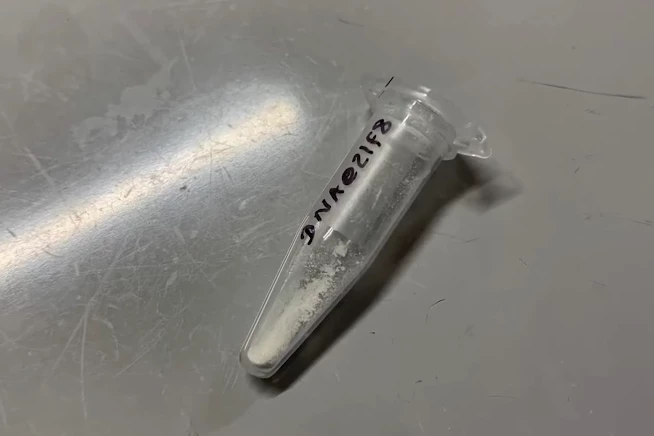Wouldn't it be nice if medication could be injected without using a painful needle, and if that medication could be stored at room temperature? Well, it turns out that MOF-Jet technology may make both things possible.
Dating as far back as the 1960s, jet injectors have been used to quickly deliver drugs through the skin without utilizing hypodermic needles. The technique is still painful for recipients, however, as it involves forcing a concentrated stream of liquid medication through the epidermis. Additionally, biological fluid may splash back from the skin, potentially spreading diseases instead of preventing them.
A more modern and much less painful alternative is a device called the "gene gun."
It uses compressed gas to shoot tungsten- or gold-encased microparticles of proteins or other biological materials through the skin, allowing them to enter the underlying cells. Unfortunately, not only are those metals expensive, but they may actually speed the degradation of their biological payload once they've been delivered into the body.
Seeking a better-performing alternative, scientists from The University of Texas at Dallas looked to a metal-organic framework (MOF) material known as zeolitic-imidazolate framework eight, or ZIF-8.
While much less expensive than tungsten or gold, tiny particles of the material proved to be just as effective at protecting biological materials when they were shot through the skin via a modified gene gun called the MOF-Jet. Additionally, the technology can be utilized to inject ZIF-8-encased particles of powdered pharmaceuticals, which don't have to be refrigerated like their needle-injected liquid counterparts.
As an added bonus, it was found that by using different carrier gases, the release time of the medication can be varied. If carbon dioxide is used, for example, it reacts with water in the cells to form carbonic acid. That acid breaks down the ZIF-8, causing it to release its payload relatively quickly. If regular compressed air is used, on the other hand, the ZIF-8 particles take four to five days to break down.

In lab tests, the technology was successfully utilized to deliver a ZIF-8-encased gene into onion cells, and to deliver a ZIF-8-encased protein into mice. The scientists are now using the system to deliver chemotherapeutics and adjuvants as a potential treatment for melanoma.
And no, it doesn't hurt. According to the researchers, receiving a MOF-Jet injection feels "like you got hit with a Nerf bullet."
The findings of the study – which is being led by Assoc. Prof. Jeremiah Gassensmith and graduate student Yalini Wijesundara – were recently presented at the spring meeting of the American Chemical Society.
Source: American Chemical Society




